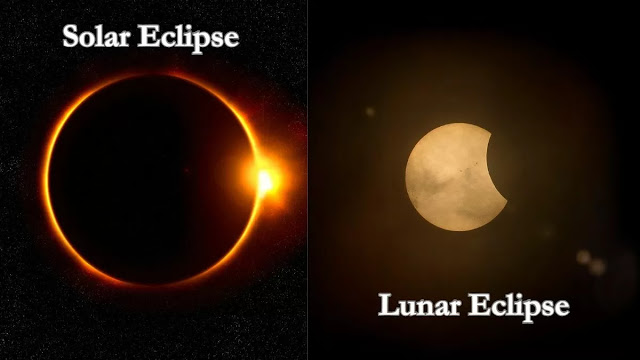Lunar eclipse and difference between Solar eclipse and Lunar eclipse?
What is Lunar eclipse?
Lunar eclipses occur when the Earth passes between the sun and the moon, producing a shadow on the moon's surface.
They can only occur during a full moon and are a favourite event for skywatchers worldwide because they do not require any additional equipment to enjoy (unlike solar eclipses).
Earth will witness two moon eclipses in 2023. On May 5, 2023, a penumbral lunar eclipse was visible across regions of Africa, Asia, and Australia. The second and last lunar eclipse of 2023 will be a partial lunar eclipse on October 28 that will be visible across areas of the Eastern Americas, Europe, Africa, Asia, and Australia. Check out our lunar eclipses 2023 guide to find out when, where, and how to see this year's lunar eclipses.
A lunar eclipse occurs when Earth blocks sunlight from reaching the moon, casting a shadow across its surface.During a lunar eclipse, the sun-blocking Earth creates two shadows on the moon: the umbra, which is a full, dark shadow, and the penumbra, which is a partial outer shade.
Lunar eclipses are classified into three categories based on how the sun, Earth, and moon are aligned at the time of the event.The Earth's shadow is cast across the entire lunar surface during a total lunar eclipse.
Partial lunar eclipse:During a partial lunar eclipse, only a portion of the moon enters Earth's shadow, giving the appearance of a "bite" into the lunar surface. The moon's shadow will seem dark on the side facing Earth. According to NASA, the amount of "bite" we see depends on how the sun, Earth, and moon align.
The feeble outer half of Earth's shadow is cast across the lunar surface during a penumbral lunar eclipse. This eclipse is not as spectacular as the other two and can be difficult to see.
A lunar eclipse is a reasonably common astronomical phenomena, with roughly three lunar eclipses occurring each year, according to the National History Museum. According to TimeandDate, complete lunar eclipses account for around 29% of all lunar eclipses.
What is the distinction between the Solar eclipse ang Lunar eclipse?
When the moon passes in front of the sun (during new moon), a solar eclipse occurs. A lunar eclipse is a unique phenomenon. It happens when the full moon enters the Earth's shadow.
ByKavitha..😇





Comments
Post a Comment